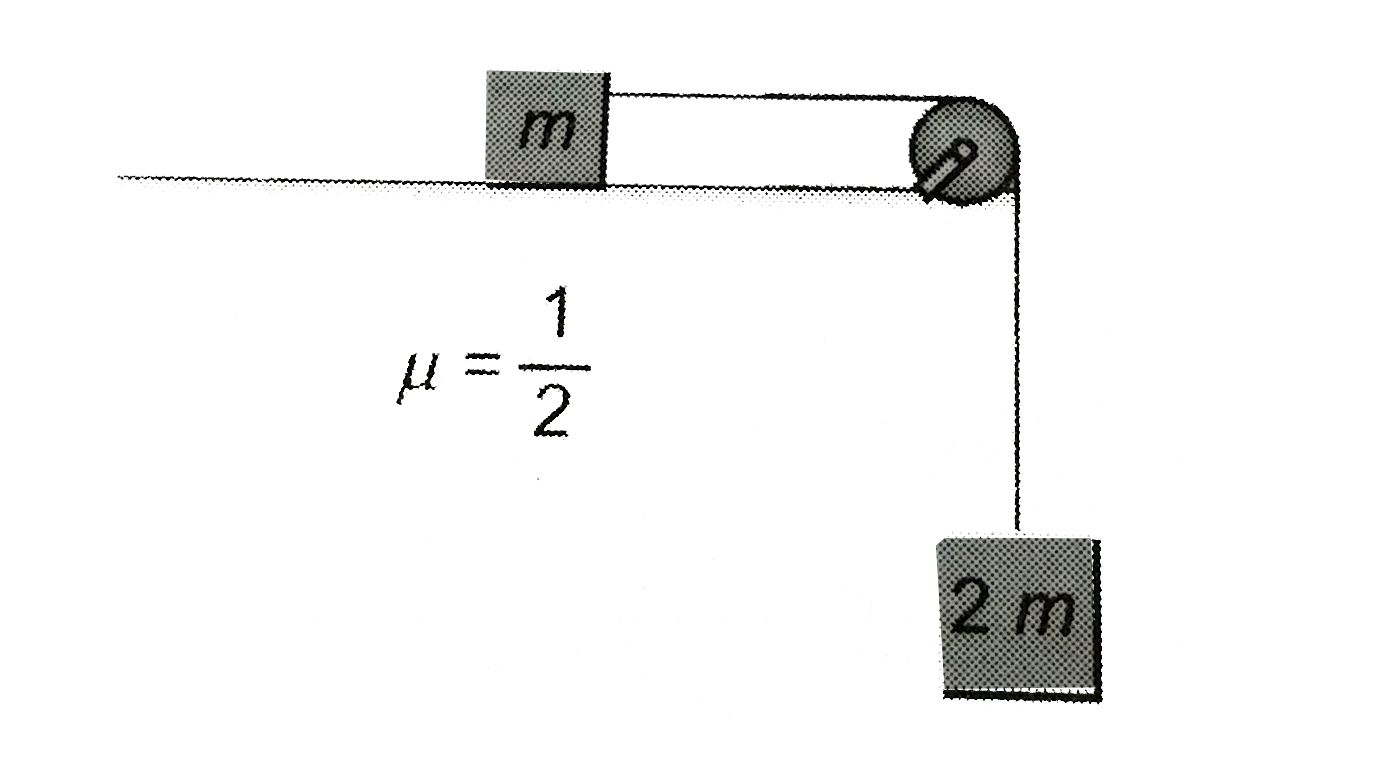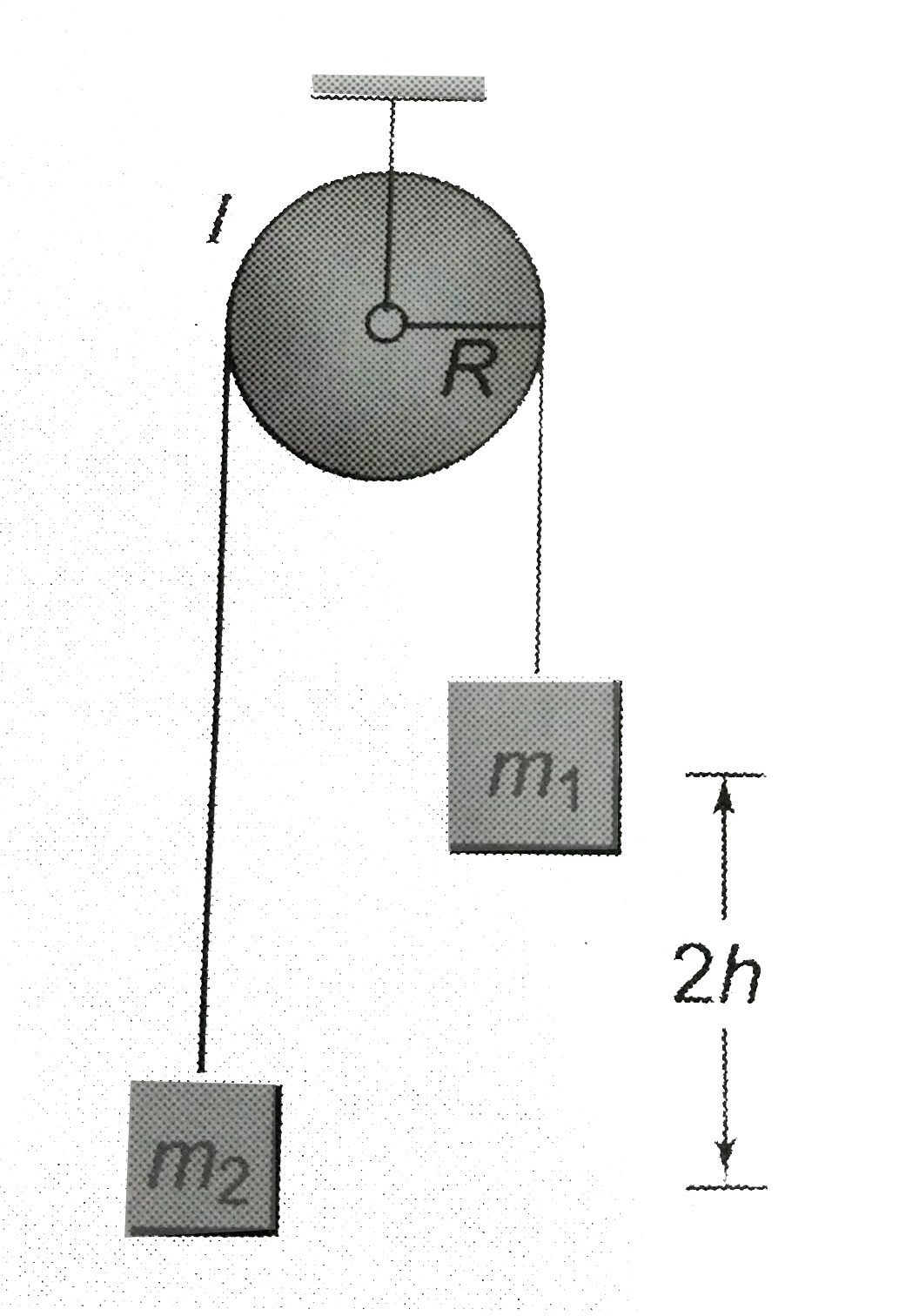Consider the situation as shown in the figure. The pulley has moment of inertia I and radius r. The table is rough and the coefficient of kinetic friction is μk. The system is released from the rest. Calculated speed of block of mass 3m as a function of the distance h it has descended. Assume no slipping.


Loss in the gravitational potential of block of mass 3m
= gain in the kinetic energy (block + pulley) + work done against friction
3mgh=12×3mv2+12×mv2+12Iω2+μkmgh
mgh(3−μk)=2mv2+12I(vr)2=v2(2m+I2r2)
=2mv2(1+I4mr2)
v=
⎷gh(3−μk)2(1+I4mr2)
Topper's Solved these Questions
Similar Questions
Consider the situation as shown. The pulley has a moment of inertia I, and radius r, the block is in equilibrium. Find the time period of mass m. Assume no slipping.

View SolutionConsider the situation as shown in the figure. The moment of inertia of wheel is 2kgm2 and its radius is 0.25m. Find the angular acceleration of the wheel, assuming no slipping.

View Solution
Knowledge Check
The system shown in the figure is released from rest. At the instant when mass M has fallen through a distance h, the velocity of m will be
 A√2ghB√2ghMmC√2gh(M−m)m+MD√2gh(M+m)m−M
A√2ghB√2ghMmC√2gh(M−m)m+MD√2gh(M+m)m−M
Consider the situation as shown in the diagram. The pulley has radius R and moment of inertia I. The block is release when the spring (spring constant k) is unstretched. Find the speed of block when the vlock has fallen a distance h. Assume no slipping.

View Solution
Consider the situation as shown in the figure. The system is released from rest. Find the speed of m when it has traveled a distance d on a rough surface.
View SolutionConsider the situation as shown in the figure. If m1>m2, I is the moment of intertia about its axis of rotation, R is the radius of pulley. The objects are released from rest separated by a vertical distance 2h. Find the translational speed of the objects as they pass each other. Assume no slipping.

View Solution
Consider a situation as shown in the figure. The system is released from rest. When the block of mass m has falled a distance L, its speed becomes √gL3. Find the friction coefficient μ.
View SolutionConsider the situatioin shown in figure. The system is released from rest and the block of mass 1.0 kg is found to have a speed 0.3 m/s ater it has descended thrugh a distance of 1 m. find the coefficient of kinetic friction between the block and the table.

View SolutionConsider the system shown in the figure. Coefficient of friction between the block and table is μ=0.5. The system is released from rest. Find the work done by friction, when the speed of block is 10 m/s (m=1kg)

View SolutionIf the system is released from rest, determine the speeds of both masses after B has moved 1 m. Neglect friction, the masses of pulleys and inextensible string.

View Solution